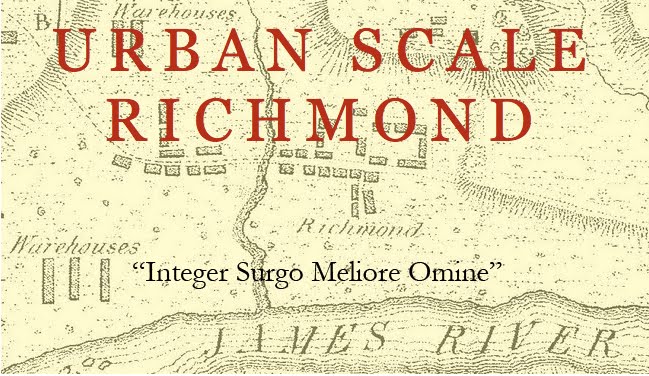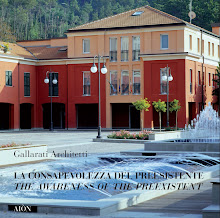How very differently do we shape our history in
Virginia, where we accept such facts as we find
desirable and dismiss those which are not to our
purpose! . . . The great epic of Virginia’s settlement
may not have occurred precisely as Virginians narrate
it; yet that suspicion may be raised likewise as to the
Odyssey and the Aeneid without prompting us to
contemn any one of these three masterworks.
James Branch Cabell, Let Me Lie, 1947
 |
| The Gov. Botetourt statue when it stood at William and Mary College [Louise Manly, Southern Literature, 1900] |
The Houdon Washington was followed in Capitol Square in 1858 by a great monument to the Revolutionary generation by sculptor Thomas Crawford, hoped by its planners to be the burial place for Washington himself. It was topped with an equestrian statue of Washington placed on axis with Grace Street. The huge allegorical composition was completed with encircling statues of Patrick Henry, Thomas Jefferson, Andrew Lewis, John Marshall, George Mason, and Thomas Nelson in 1869. Other statues followed in Capitol Square, including Henry Clay (sculptor Joel Hart, 1860). After 1865, the city’s former role as Confederate Capital meant that it carried the weight of much of the post-war symbol-making that overlaid the essentially tragic viewpoint of the Lost Cause. The Confederate heroes were treated much the same as the Revolutionary generation in former years. None of the Confederates, not even Lee, could participate in the city’s founding narratives.
 |
| Aeneas from the Ara Pacis (above) and Capt. John Smith (below) |
 |
The “Newport Cross” today [wikipedia]
|
From this spacious dwelling Colonel WILLIAM BYRD
the Second of WESTOVER set out in 1737 to lay
the foundations and to project the future of the CITY
OF RICHMOND. Its grateful citizens, recalling the
sufferings bourne and the glories experienced, the
duties met and the common purposes achieved, the
physical conquests realized and the spiritual powers
evoked, by this tablet record their debt to the large
concept of the FOUNDER and their obligation for the
unfailing courage, the ever-springing foresight, and
the controlling patriotism of their forbears.
the Second of WESTOVER set out in 1737 to lay
the foundations and to project the future of the CITY
OF RICHMOND. Its grateful citizens, recalling the
sufferings bourne and the glories experienced, the
duties met and the common purposes achieved, the
physical conquests realized and the spiritual powers
evoked, by this tablet record their debt to the large
concept of the FOUNDER and their obligation for the
unfailing courage, the ever-springing foresight, and
the controlling patriotism of their forbears.






















No comments:
Post a Comment